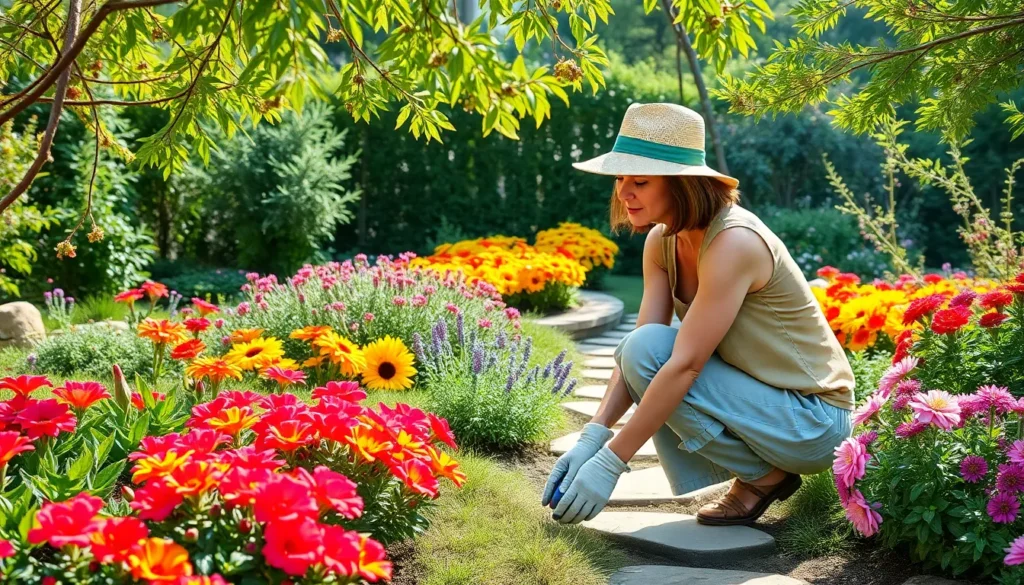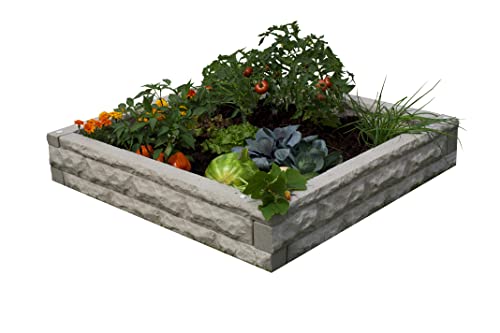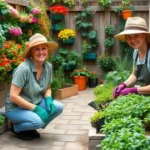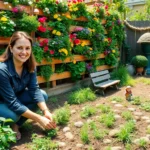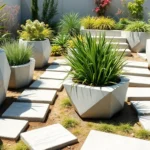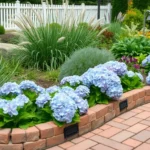Transform your outdoor space into distinct zones that serve multiple purposes and maximize every square foot. Garden division isn’t just about creating boundaries—it’s about crafting functional areas that enhance your industry’s beauty and utility.
We’ve discovered that strategic garden division can solve common problems like limited space awkward layouts and conflicting plant needs. Whether you’re dealing with a sprawling backyard or a compact urban plot dividing your garden creates opportunities for specialized growing areas relaxation zones and visual interest that draws the eye through your space.
The best part? You don’t need expensive materials or professional installation to achieve stunning results. From living hedges and decorative screens to raised beds and pathway systems we’ll show you creative answers that work within any budget and skill level while adding important value to your property.
Create Visual Boundaries With Hedges and Shrubs
Natural plant barriers offer one of the most effective ways to divide garden spaces while maintaining an organic feel. Living boundaries provide year-round structure and can be customized to match your garden’s exact needs and aesthetic preferences.
Choose Fast-Growing Privacy Hedges
Fast-growing privacy hedges establish defined garden zones within just 2-3 seasons of planting. Privet hedges can reach 6-8 feet in height and grow up to 2 feet per year, making them ideal for creating quick separation between functional areas like vegetable gardens and entertainment spaces. Leyland cypress provides even faster results, often growing 3-4 feet annually and reaching mature heights of 15-20 feet.
Consider bamboo varieties for ultra-rapid screening that creates dramatic vertical divisions. Clumping bamboo species like Golden Bamboo or Fountain Bamboo won’t spread aggressively while still providing dense coverage within one growing season. These options work particularly well for separating modern outdoor dining areas from utility spaces or compost areas.
Plant fast-growing hedges in early spring for maximum establishment time before winter. Space individual plants 2-3 feet apart for quicker coverage, or 4-5 feet apart if you’re willing to wait an extra season for full density. Regular watering during the first year ensures rapid root development and faster overall growth.
Select Low-Maintenance Evergreen Options
Low-maintenance evergreen shrubs provide year-round structure without demanding constant attention. Boxwood varieties like Green Velvet or Winter Gem maintain their compact shape with minimal pruning and tolerate various soil conditions. These evergreens work exceptionally well for creating formal divisions between herb gardens and flower beds.
Choose native evergreen options that thrive in your exact climate zone. Holly varieties offer glossy foliage and colorful berries while requiring little care once established. Juniper cultivars provide diverse textures and colors, from blue-green to golden yellow, allowing you to create visual interest while maintaining practical boundaries.
Plant evergreen hedges 3-4 feet apart for slower but more sustainable growth patterns. Most low-maintenance varieties establish deep root systems that make them drought-tolerant after the second year. Annual fertilization in early spring and occasional shape-trimming in late summer typically provide all the care these hardy plants need.
Incorporate Flowering Shrub Borders
Flowering shrub borders combine practical division with seasonal color displays throughout the growing season. Spirea varieties bloom in spring with cascading white or pink flowers, while maintaining attractive foliage that provides structure year-round. These shrubs typically reach 3-5 feet in height, making them perfect for creating waist-high boundaries between different garden rooms.
Mix different flowering shrubs to ensure continuous blooms from spring through fall. Forsythia provides early spring yellow flowers, followed by lilac in late spring, then hydrangeas for summer color, and finally burning bush for autumn foliage. This succession creates ever-changing visual boundaries that change with the seasons while maintaining consistent spatial division.
Plant flowering shrubs in curved or zigzag patterns rather than straight lines for more natural-looking divisions. Space plants 4-6 feet apart to allow for mature spread and air circulation. Group odd numbers of the same variety together, such as clusters of 3 or 5 plants, to create more impactful visual statements while still maintaining clear garden boundaries.
Install Hardscape Elements for Permanent Division
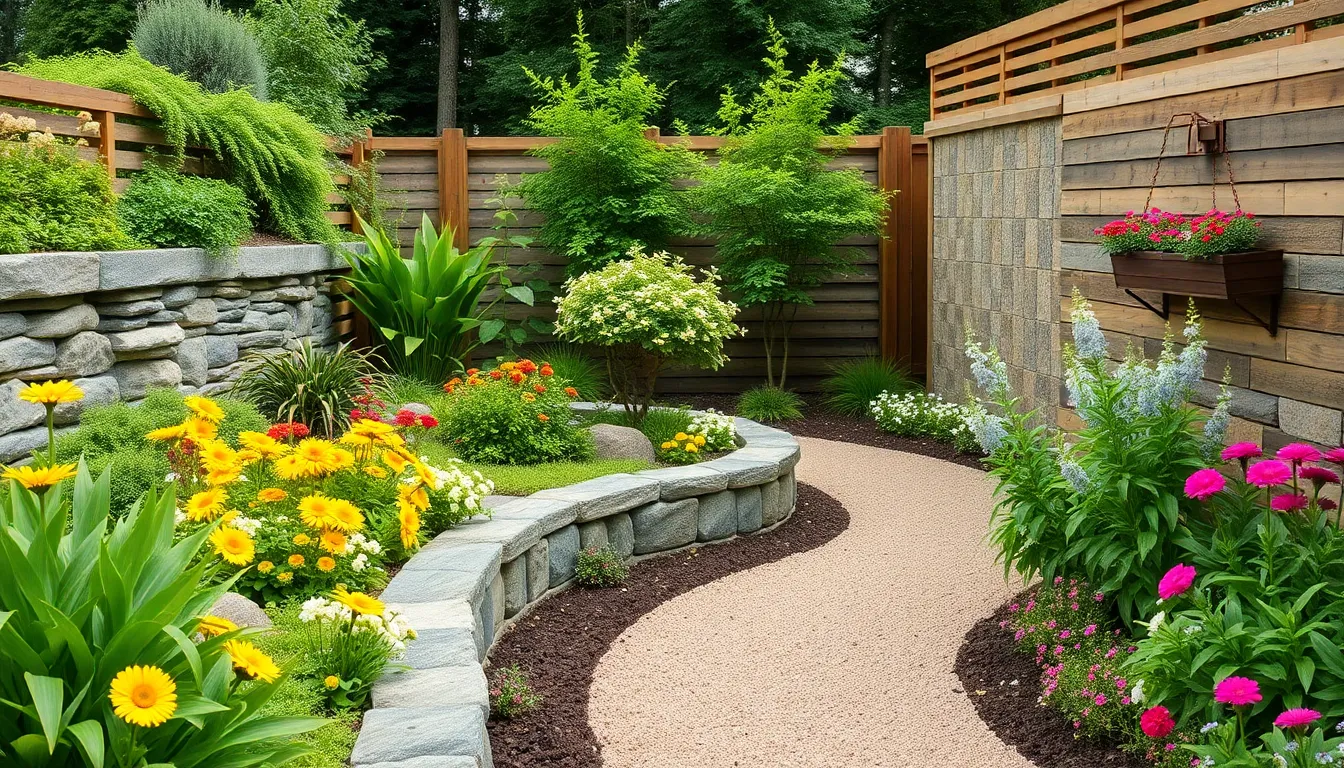
Hardscape elements create lasting structure in our outdoor spaces while establishing clear boundaries between different garden zones. These permanent features require an initial investment but provide decades of reliable function and visual appeal.
Build Decorative Garden Walls
Decorative walls transform garden spaces by creating distinct zones that serve multiple purposes throughout our industry design. Stone walls offer timeless elegance and can incorporate built-in seating areas or planters for added functionality. Brick construction provides classic charm while allowing for creative patterns that complement our home’s architectural style.
Concrete block walls deliver modern aesthetics with exceptional durability and weather resistance. We can customize these structures with various textures, colors, and finishes to match our design preferences. Railway sleepers create rustic barriers that work particularly well in cottage-style gardens and can double as raised bed borders.
Natural stone retaining walls serve dual purposes by managing slope changes while creating terraced planting areas. These structures help prevent soil erosion and provide opportunities for cascading plants or water features.
Add Stylish Fencing Answers
Wooden fences bring natural warmth to garden divisions while offering flexibility in height and style options. Cedar and redwood varieties resist weather damage naturally, requiring minimal maintenance over their lifespan. Horizontal slat designs create contemporary lines that work well in modern industry settings.
Metal fencing provides sleek definition with materials like aluminum, steel, or wrought iron offering different aesthetic appeals. Powder-coated finishes resist rust and fading while maintaining their appearance through various weather conditions. Decorative metal screens can incorporate artistic patterns that cast interesting shadows throughout the day.
Composite fencing combines wood fibers with recycled plastics to create low-maintenance barriers that won’t warp, split, or require regular staining. These materials come in various colors and textures that mimic natural wood grain.
Create Pathways as Natural Dividers
Pathways guide movement through our garden while subtly separating different functional areas without creating hard barriers. Gravel paths offer excellent drainage and can incorporate stepping stones or bordered edges for enhanced visual interest. Stone walkways provide permanent answers that complement most garden styles and require minimal upkeep.
Extended pergolas create overhead definition along pathways while supporting climbing plants that add vertical interest. These structures link different garden zones harmoniously while providing partial shade and architectural focal points. Archways positioned along paths create natural transition points between garden rooms.
Rockeries establish natural-looking divisions that can accommodate a variety of plants while adding textural contrast to softer industry elements. We can build these features using local stones to maintain regional character and create habitat for beneficial insects and small wildlife.
Green walkways using groundcover plants or lawn strips provide soft transitions that feel organic within the industry design. These living pathways require regular maintenance but offer seasonal changes that keep our garden divisions visually ever-changing throughout the year.
Design Functional Zones With Raised Beds
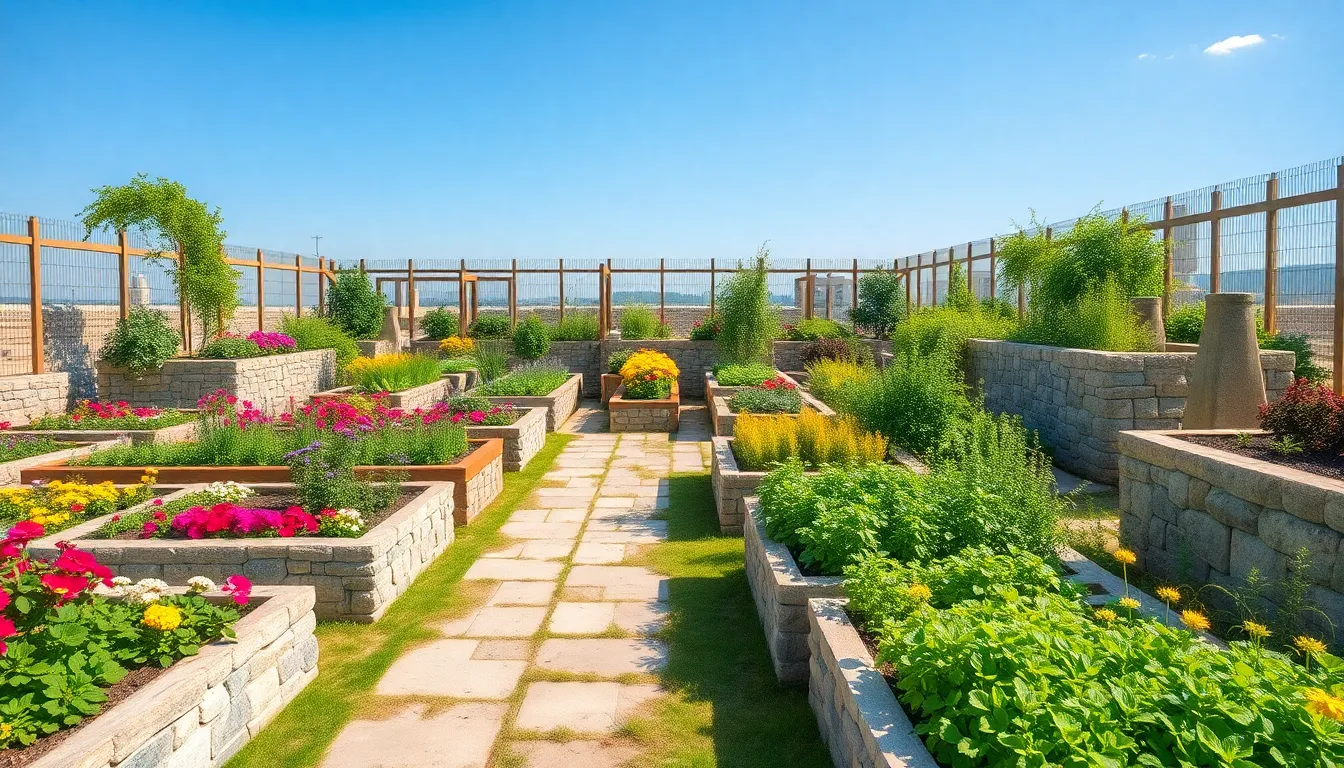
Raised beds offer the perfect foundation for creating organized garden zones that maximize both productivity and visual appeal. We can transform any outdoor space into a well-structured garden by strategically positioning these elevated growing areas.
Separate Vegetable and Flower Gardens
Vegetable gardens thrive when given their own dedicated raised bed zones. We recommend creating rectangular beds that measure 4 feet wide, allowing easy access from both sides without stepping on the soil. Square foot gardening techniques work exceptionally well in these dedicated vegetable zones, maximizing productivity in compact spaces.
Flower gardens deserve their own elevated showcase areas separate from food production. We can design raised beds specifically for ornamental plants, focusing on color schemes and seasonal blooms that enhance visual appeal. These dedicated flower zones allow us to control soil conditions perfect for different bloom types while maintaining distinct garden purposes.
Pathways between vegetable and flower zones should measure at least 18 inches wide. This spacing ensures comfortable movement between different garden areas while preventing soil compaction from foot traffic.
Create Herb Garden Sections
Herb gardens work beautifully when contained within their own raised bed sections. We can position these aromatic zones near kitchen access points for convenient harvesting during meal preparation. Container integration within raised herb beds provides additional flexibility for seasonal replanting.
Accessibility becomes crucial when designing dedicated herb growing areas. We suggest organizing herbs by height and usage frequency, placing commonly used varieties like basil and parsley at the front edges of raised beds.
Organization improves significantly when herbs occupy designated raised bed sections. This approach keeps different herb varieties contained while preventing aggressive spreaders from overtaking other garden zones.
Build Tiered Planting Areas
Tiered gardens create stunning visual layers using multiple raised bed heights. We can construct these elevated zones using stone walls or stacked wood to achieve dramatic height differences that improve both drainage and soil management.
Erosion reduction becomes automatic with properly designed tiered raised beds. These elevated planting zones naturally channel water flow while preventing soil loss that commonly affects sloped garden areas.
Stone wall construction offers permanent answers for tiered garden zones. We recommend building these elevated areas in ascending heights, creating natural viewing angles that showcase different plant varieties at each level.
Establish Natural Barriers Using Plants
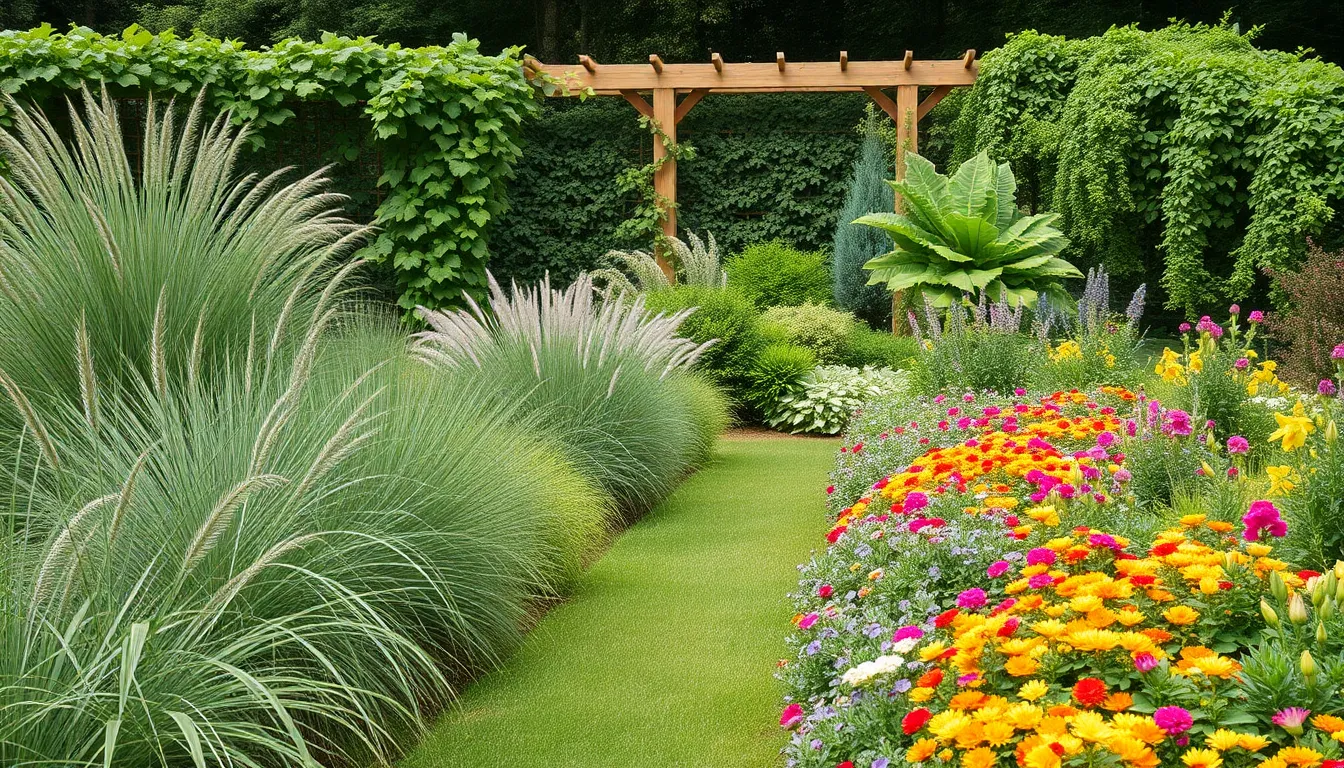
We can transform our gardens into distinct zones using plants that naturally divide spaces while improving the overall aesthetic. Living barriers offer sustainable answers that grow more beautiful over time.
Plant Ornamental Grass Screens
Dense plantings of ornamental grasses create effective natural screens that divide garden areas while providing visually appealing backdrops. We recommend planting these grasses closely together to establish solid barriers that block sightlines between different zones. Popular varieties like fountain grass, maiden grass, and feather reed grass offer excellent screening capabilities while requiring minimal maintenance.
Seasonal interest becomes a major advantage with ornamental grass screens since they provide changing colors and textures throughout the year. Spring brings fresh green growth, summer showcases full foliage displays, autumn delivers stunning color changes, and winter maintains structural interest with dried plumes and seed heads.
Create Living Walls With Climbing Vines
Climbing vines like clematis and wisteria transform ordinary support structures into stunning living walls that effectively divide garden spaces. We can install trellises, arbors, or pergolas to support these vigorous climbers while creating vertical elements that add height and drama to our landscapes. Annual vines provide quick coverage for immediate results, while perennial varieties establish permanent divisions that improve each growing season.
Support structures enhance the visual appeal of climbing vine installations beyond their functional purpose. Wooden trellises create rustic charm, metal arbors add contemporary style, and stone pillars provide classical elegance. We should choose materials that complement our existing garden design while ensuring adequate strength for mature vine growth.
Use Perennial Flower Borders
Colorful divisions emerge when we plant perennial flowers in strategic borders that separate different garden areas. Mixed perennial plantings create vibrant boundaries that change throughout the growing season, offering continuous visual interest while maintaining clear spatial divisions. We can arrange flowers by height, bloom time, and color to create stunning displays that serve as living artwork.
Year round interest becomes achievable through careful perennial selection that provides varying bloom times and foliage textures across seasons. Early spring bulbs kickstart the display, summer perennials maintain peak color, fall bloomers extend the season, and ornamental seed heads provide winter structure. Strategic combinations ensure our garden divisions remain attractive even during dormant periods.
Incorporate Water Features as Garden Dividers
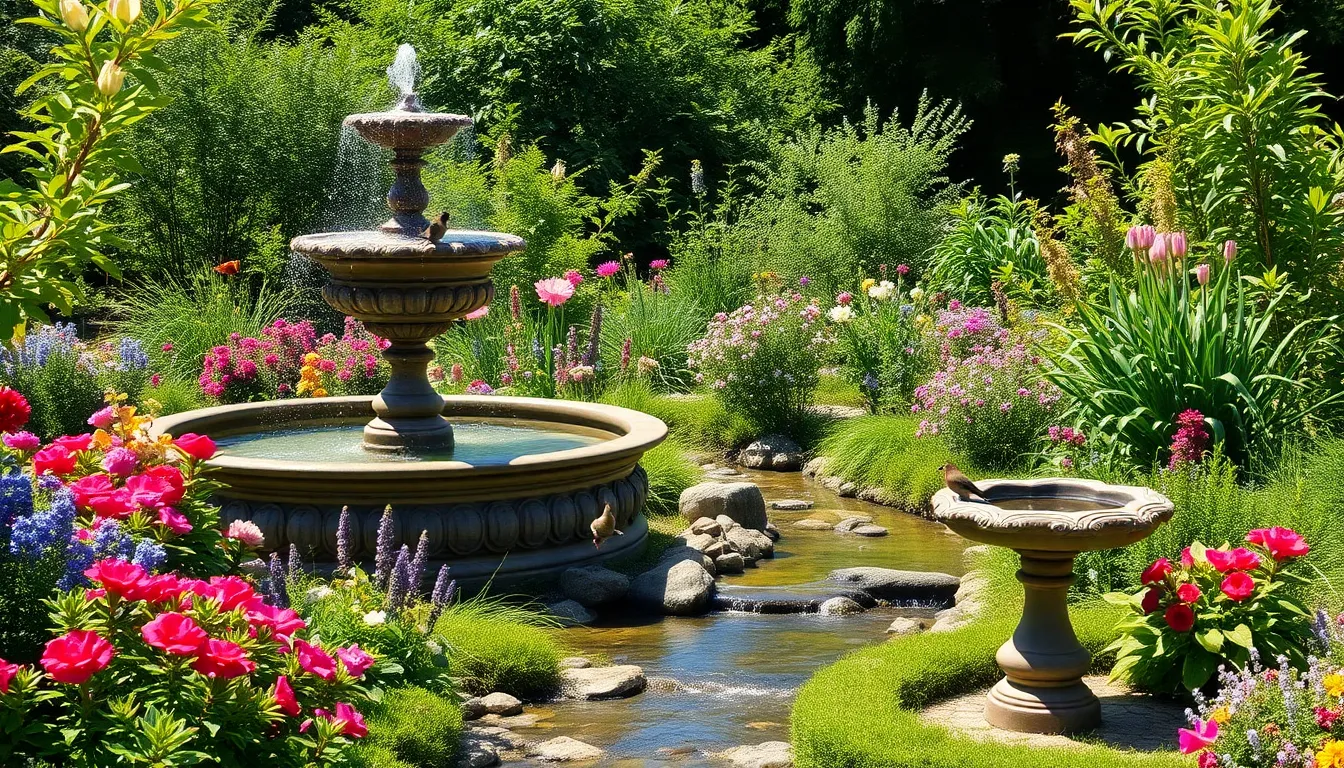
Water features transform garden divisions into stunning focal points that serve both practical and aesthetic purposes. Moving water creates natural boundaries while adding the soothing sounds of flowing streams to enhance our outdoor experience.
Install Decorative Garden Fountains
Wall fountains create impressive vertical dividers that save valuable ground space in smaller gardens. Mounting these features on retaining walls draws the eye upward and establishes clear boundaries between different garden zones. Solar powered options eliminate the need for electrical connections while providing efficient operation throughout the day.
Statue fountains combine artistic elements with functional water features to separate garden sections effectively. These decorative pieces serve as statement centerpieces while creating natural stopping points that guide visitors through different areas. Positioning multiple fountain styles throughout the space creates a cohesive water theme that unifies the entire garden design.
Tiered fountain designs work particularly well for sloped gardens where traditional dividers might look awkward. Water flows naturally from level to level, creating both visual interest and practical separation between planting zones.
Create Stream or Pond Boundaries
Small streams function as natural dividers that feel organic within the industry design. Building these water features with gently curving paths creates more interesting boundaries than straight lines while accommodating the natural flow of water. Stepping stones across streams provide access points while maintaining the separation between garden areas.
Brook style water features enhanced with lush plantings create the most natural looking divisions. Native plants along the water’s edge attract wildlife while softening the boundaries between different garden zones. Rock placement along stream beds adds texture and helps control water flow for optimal visual appeal.
Pond boundaries with walkways or bridges offer dramatic transitions between garden sections. These features create clear separation while providing elevated viewing points to appreciate different planting areas. Pond edges lined with varied plants establish soft transitions that feel more natural than hard landscaping materials.
Add Birdbath Focal Points
Birdbaths positioned strategically throughout the garden create subtle division points without blocking sightlines completely. These features attract beneficial wildlife while serving as natural gathering spots that define different activity areas. Placing multiple birdbaths at varying heights creates layers of interest that guide movement through the space.
Pedestal style birdbaths work best for creating formal divisions between structured garden areas. Their classic appearance complements traditional landscaping while providing clear reference points for different zones. Surrounding these features with low plantings helps define the boundaries without creating complete barriers.
Ground level water dishes offer more casual division options that work well in naturalistic garden designs. These shallow features blend seamlessly with existing landscaping while still providing the wildlife benefits and subtle boundary definition we want to achieve.
Build Temporary and Flexible Dividers
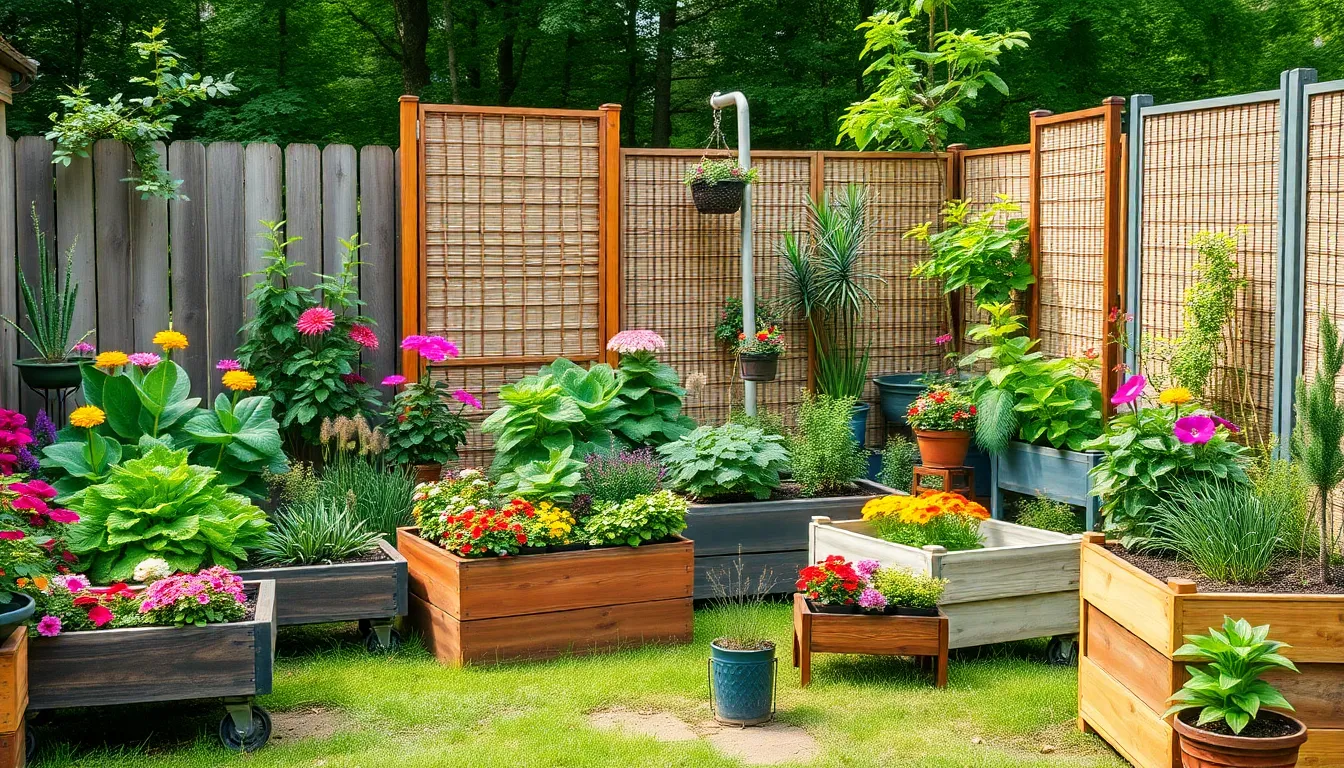
Temporary garden dividers offer the perfect solution when you want flexibility without permanent commitment. These adaptable options let you experiment with different layouts and adjust your garden design as your needs evolve.
Use Moveable Planter Boxes
Moveable planter boxes serve double duty as functional dividers and growing spaces for your favorite plants. We recommend choosing lightweight materials like resin, fiberglass, or cedar that won’t strain your back when repositioning them. Strategic placement of these boxes creates instant garden rooms while housing herbs, vegetables, or colorful annuals.
Large rectangular planters work exceptionally well for creating linear divisions between entertaining areas and working zones. Consider boxes measuring 36 to 48 inches in length for maximum visual impact without overwhelming smaller spaces. Adding wheels or casters to heavier wooden planters transforms them into mobile garden elements you can easily relocate.
Height variations among your planter boxes add visual interest while maintaining the flexible division concept. Tall planters reaching 24 to 30 inches create privacy screens, while shorter 12 to 18 inch versions define pathways without blocking sight lines.
Install Removable Garden Screens
Removable garden screens provide instant privacy and visual separation that adapts to your changing outdoor needs. Fabric screens made from weather resistant materials like Sunbrella or outdoor canvas attach to portable frames using grommets or ties. These lightweight options fold flat for easy storage during winter months or severe weather.
Bamboo screens offer natural beauty while filtering wind and creating intimate spaces within larger gardens. We suggest choosing screens with metal frames that won’t warp or crack, ensuring years of reliable use. Many bamboo options feature hinged panels that fold accordion style for compact storage.
Decorative metal screens featuring laser cut patterns combine artistic elements with practical function. These screens often come with ground stakes or weighted bases that require no permanent installation. Popular designs include geometric patterns, nature motifs, and abstract shapes that complement various garden styles.
Privacy screens measuring 6 feet tall provide adequate screening for most residential applications while remaining manageable for one person to move and position.
Create Seasonal Plant Arrangements
Seasonal plant arrangements act as living dividers that transform throughout the year, keeping your garden ever-changing and captivating. Spring bulb displays featuring tulips, daffodils, and crocuses create colorful boundaries that naturally fade as summer perennials take center stage. We recommend planting bulbs in portable containers so you can easily rearrange them for optimal visual impact.
Summer arrangements utilizing tall annuals like sunflowers, cosmos, and zinnias form temporary walls of color between different garden zones. These plants grow quickly from seed, making them budget friendly options for large scale divisions. Container grown versions offer even more flexibility for repositioning as your garden evolves.
Fall displays incorporating ornamental kale, chrysanthemums, and decorative grasses extend the growing season while maintaining distinct garden areas. Winter arrangements featuring evergreen boughs, berry laden branches, and architectural plants like ornamental cabbage provide structure when most plants go dormant.
Rotating seasonal containers every few months keeps your garden divisions fresh and prevents viewer fatigue. This approach works particularly well in high traffic areas where people notice and appreciate frequent changes.
Design Multi-Level Garden Spaces
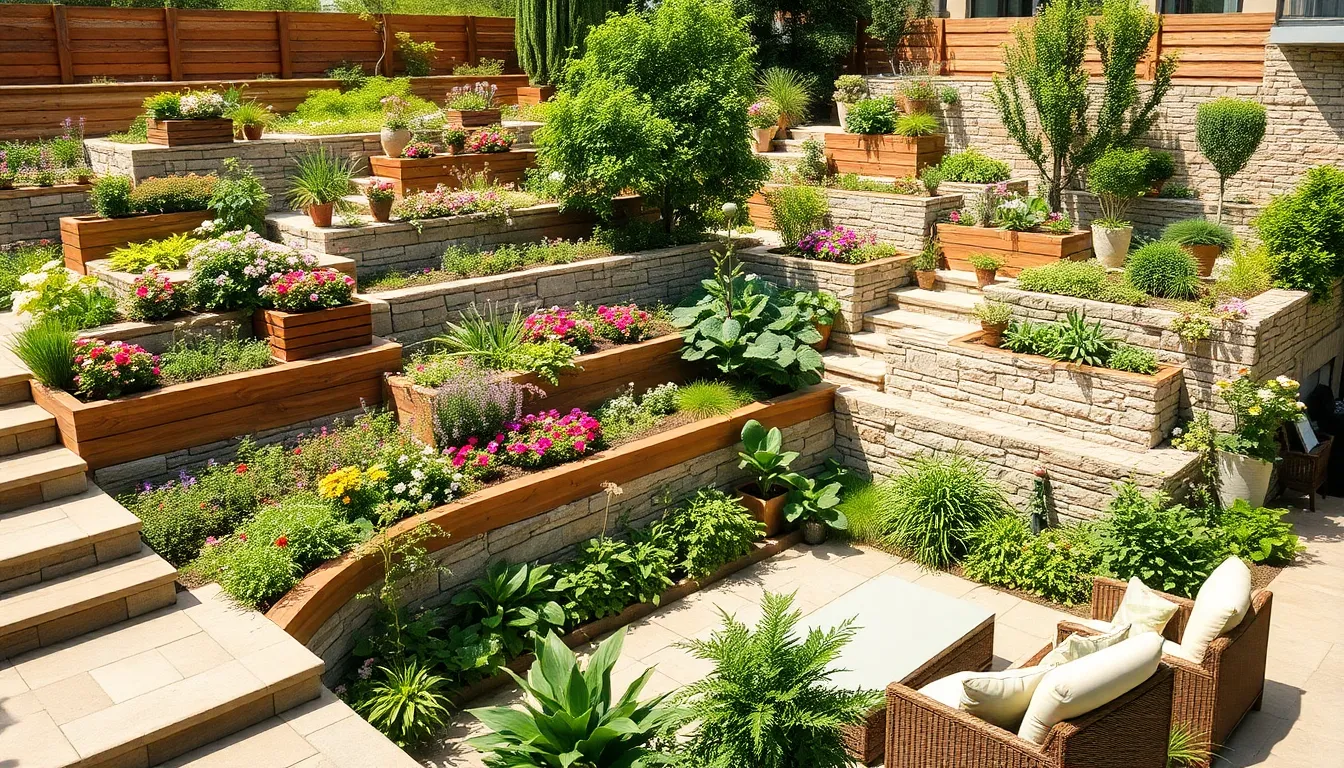
Multi-level designs transform ordinary gardens into ever-changing landscapes that maximize functionality and visual appeal. These vertical approaches help us create distinct zones while making the most of available space.
Construct Terraced Garden Sections
Building terraced sections allows us to transform sloping yards into functional outdoor living areas. We can construct flat platforms at different elevations using retaining walls made from wood or stone materials. Each terrace serves exact purposes like dining areas, seating spaces, or dedicated planting zones.
Stone terracing provides long-lasting durability and natural beauty that complements most garden styles. Wood retaining walls offer warmth and flexibility, making them perfect for modern outdoor designs. Terraced sections help prevent soil erosion while creating usable space on previously challenging slopes.
We recommend spacing terraces 3-4 feet apart vertically to ensure comfortable navigation between levels. Each platform should measure at least 6-8 feet deep to accommodate furniture or substantial plantings. Proper drainage becomes essential for terraced designs, so we’ll need to install French drains or gravel bases behind retaining walls.
Build Elevated Planting Platforms
Elevated platforms create stunning layered effects while providing easy access for garden maintenance. We can construct these raised areas using wood planks, concrete blocks, or composite materials depending on our budget and style preferences. These platforms work exceptionally well for displaying specimen plants or creating focal points throughout the garden.
Height variations between 12-36 inches provide optimal visual impact without overwhelming the space. We’ll want to ensure platforms are wide enough to accommodate mature plant sizes, typically 4-6 feet across for most applications. Built-in irrigation systems can be incorporated during construction to simplify watering routines.
Elevated platforms improve soil drainage naturally while reducing back strain during planting and weeding activities. We can connect multiple platforms with stepping stones or low bridges to create cohesive garden pathways. These structures also help protect sensitive plants from ground-dwelling pests and excessive moisture.
Create Sunken Garden Areas
Sunken areas provide intimate spaces that feel naturally separated from the main garden level. We excavate these lower sections 2-3 feet below grade to create cozy gathering spots for relaxation or entertaining. Surrounding plants and garden features enhance the enclosed feeling of these special zones.
Proper drainage becomes critical for sunken areas to prevent water accumulation during heavy rains. We’ll need to install drainage pipes and gravel layers beneath the surface to direct water away from seating areas. Retaining walls around the perimeter provide structural support and additional seating options.
Sunken gardens work particularly well for fire pits, meditation spaces, or outdoor dining areas. We can enhance these areas with built-in benches, decorative lighting, or water features for added ambiance. Steps or gentle slopes provide safe access while maintaining the secluded atmosphere these spaces create.
Add Decorative Elements for Visual Interest
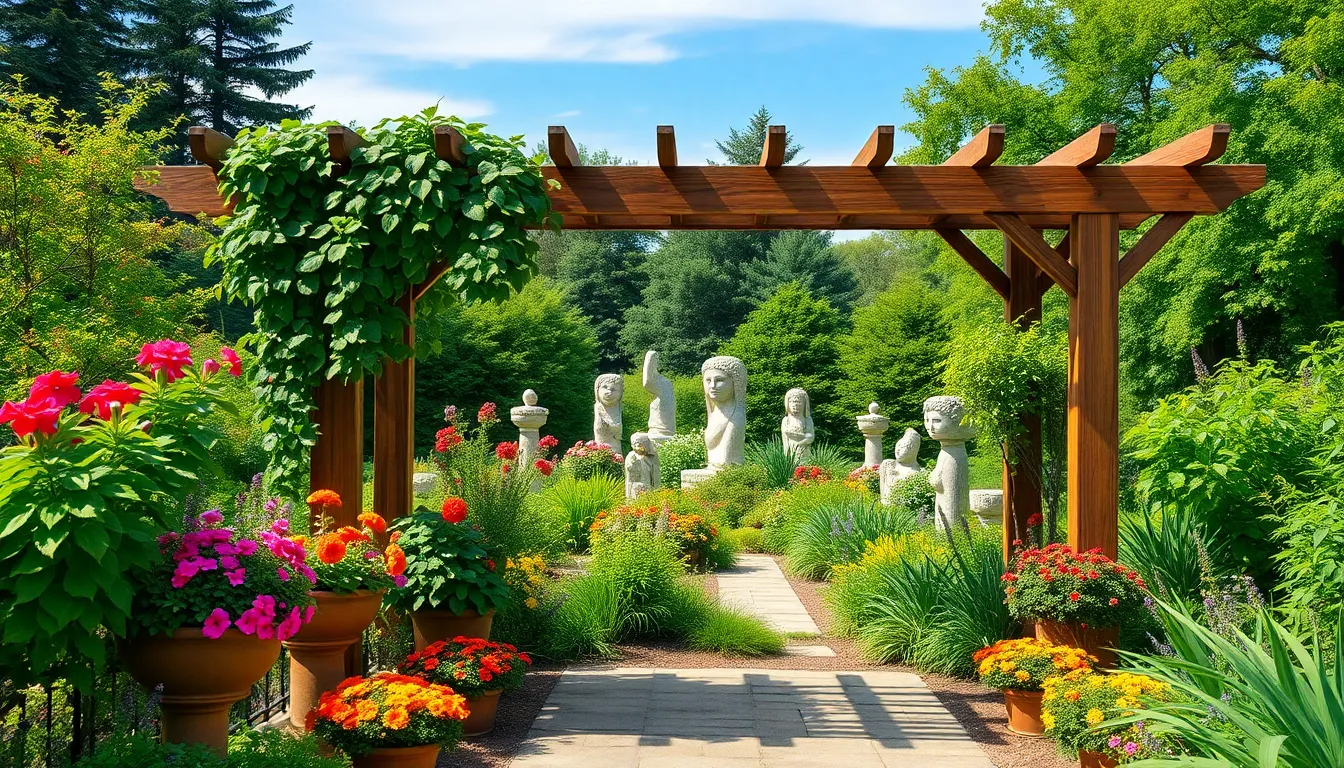
Decorative elements transform simple garden divisions into stunning focal points that enhance the overall design. These features combine functionality with aesthetic appeal to create memorable outdoor spaces.
Install Garden Arbors and Trellises
Garden arbors create magnificent entrances between different garden zones while supporting climbing plants for added beauty and depth. We recommend positioning these structures at transition points where they naturally guide visitors from one area to another.
Wooden arbors work exceptionally well for cottage style gardens, offering rustic charm that complements flowering borders and herb sections. Metal trellises provide excellent support for climbing vines like clematis and wisteria, creating living walls that add vertical interest to your divisions.
Installing these structures requires minimal construction skills, making them accessible for most gardeners. Position arbors at least 8 feet apart to create comfortable walking passages between garden rooms. Support posts should extend 2 feet into the ground for stability, ensuring your decorative dividers remain secure through seasonal weather changes.
Place Strategic Outdoor Sculptures
Outdoor sculptures serve as powerful focal points that draw attention and create natural stopping points between garden sections. We suggest selecting pieces that complement your garden’s overall theme while providing visual weight to balance surrounding plantings.
Stone sculptures work beautifully in formal garden divisions, creating elegant transitions between manicured beds and natural areas. Metal artwork adds contemporary flair to modern garden designs, particularly when placed near geometric raised beds or hardscape features.
Strategic placement matters more than sculpture size when creating effective garden divisions. Position larger pieces at the intersection of pathways to anchor different zones, while smaller sculptures work well nestled among perennial borders. Consider seasonal changes when selecting placement, ensuring your decorative elements remain visible even when surrounding plants reach full growth.
Use Colorful Container Gardens
Colorful container gardens offer the ultimate flexibility for creating moveable divisions that adapt to changing garden needs. We recommend using vibrant containers filled with seasonal blooms to establish clear boundaries while adding texture and color to your outdoor space.
Large planters create instant garden rooms when positioned strategically along pathways or between functional areas. Grouping containers of varying heights produces ever-changing visual barriers that feel more natural than single large pieces. Seasonal rotations keep these divisions fresh and interesting throughout the growing year.
Container materials should complement your existing garden elements while providing adequate drainage for healthy plant growth. Ceramic pots work beautifully for formal garden divisions, while wooden containers suit cottage style designs. Weather resistant materials ensure your decorative dividers maintain their appearance through multiple seasons without constant replacement.
Conclusion
We’ve explored many ways to transform your outdoor space through thoughtful garden division. From living barriers and hardscape elements to water features and flexible answers each approach offers unique benefits for creating organized functional zones.
The beauty of garden division lies in its adaptability. Whether you’re working with a small urban plot or expansive acreage these techniques can be scaled and combined to suit your exact needs and budget.
Remember that successful garden division isn’t about following rigid rules but about creating spaces that work for your lifestyle. Start with one or two methods that resonate with you and gradually expand your design as your confidence grows.
Your divided garden will become a more purposeful enjoyable space that serves multiple functions while maintaining visual harmony throughout the seasons.
Frequently Asked Questions
What are the main benefits of dividing my garden into different zones?
Garden division creates distinct areas that serve multiple purposes, addressing common issues like limited space and awkward layouts. It enhances both beauty and functionality by establishing specialized growing areas, relaxation zones, and visual interest. This approach maximizes productivity while creating a more organized and appealing outdoor space, regardless of your garden’s size.
What are the fastest-growing plants for creating privacy between garden areas?
Fast-growing privacy hedges like privet and Leyland cypress provide quick separation between functional areas. Bamboo varieties offer ultra-rapid screening, perfect for modern spaces. For immediate results, consider ornamental grasses like fountain grass and maiden grass, which require minimal maintenance while providing effective natural screens with seasonal interest.
Can I create garden divisions without expensive materials or professional help?
Absolutely! You can achieve stunning results using budget-friendly options like moveable planter boxes, removable garden screens, and strategic plant arrangements. Temporary dividers offer flexibility, while DIY hardscape elements using basic materials like gravel pathways or simple wooden structures can create permanent divisions without breaking the bank.
How wide should pathways be between different garden zones?
Pathways between garden zones should be at least 18 inches wide to facilitate comfortable movement and prevent soil compaction. This width allows easy access for maintenance while providing clear transitions between different areas. Consider using materials like gravel, stone, or creating green walkways to enhance the overall design.
What are some low-maintenance options for year-round garden structure?
Evergreen options like boxwood and holly provide year-round structure with minimal care requirements. These plants maintain their appearance through all seasons and require less frequent pruning. Water features like birdbaths and decorative fountains also offer permanent structure while attracting wildlife and serving as natural focal points.
How can I create visual interest in my garden divisions throughout the seasons?
Use a mix of flowering shrubs for continuous blooms, perennial flower borders that change throughout seasons, and seasonal plant arrangements as living dividers. Incorporate climbing vines like clematis and wisteria for vertical interest, and consider tiered planting areas that create visual layers while providing year-round appeal.
What hardscape elements work best for permanent garden divisions?
Decorative garden walls made from stone, brick, or concrete block establish clear boundaries while enhancing visual appeal. Stylish fencing options include wooden, metal, and composite materials for aesthetic and practical benefits. Garden arbors and trellises create beautiful entrances while supporting climbing plants and guiding movement through different zones.
How can water features serve as effective garden dividers?
Water features transform divisions into stunning focal points with both practical and aesthetic purposes. Wall fountains save ground space, while statue fountains combine artistry with functionality. Small streams and ponds serve as natural dividers, and birdbaths create subtle division points that attract wildlife while defining different activity areas.
What’s the best way to design raised bed zones for maximum efficiency?
Create separate raised bed zones for vegetables and flowers with specific dimensions for easy access. Ensure pathways between zones are at least 18 inches wide. Design dedicated herb garden sections organized by height and usage frequency, and consider tiered planting areas that create visual layers while improving drainage.
How can I make my garden divisions adaptable to changing needs?
Use temporary and flexible dividers like moveable planter boxes and removable garden screens. Colorful container gardens serve as flexible dividers that adapt to changing needs. Seasonal plant arrangements keep divisions dynamic, while decorative metal screens provide dual-purpose functionality that can be repositioned as your garden evolves.

